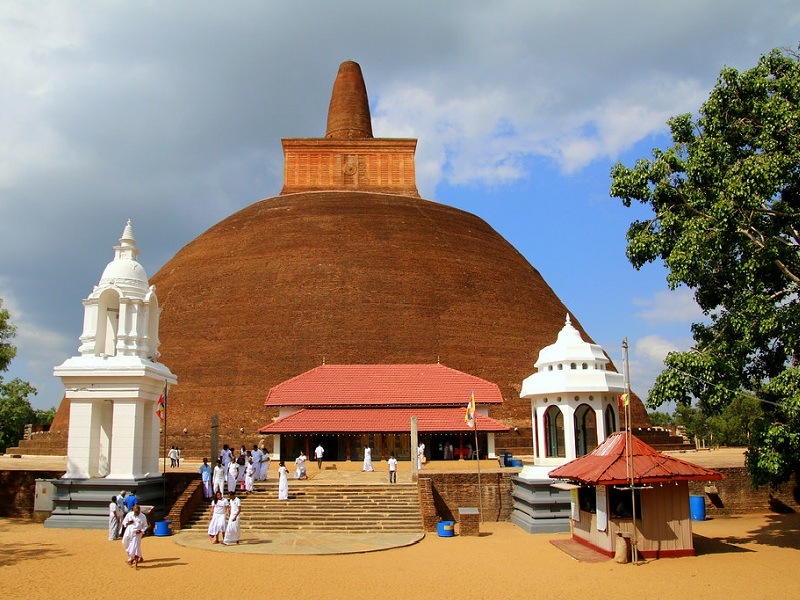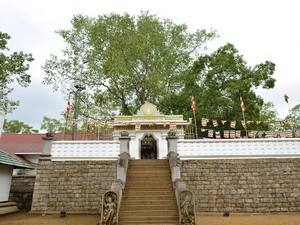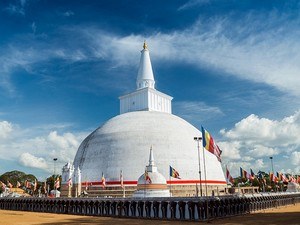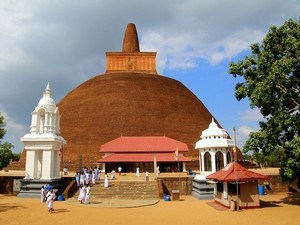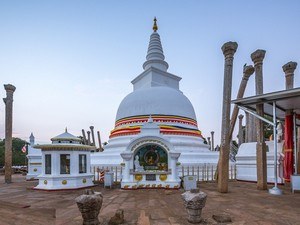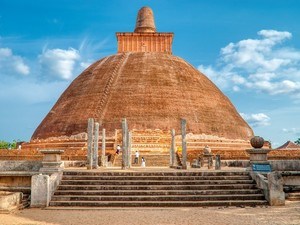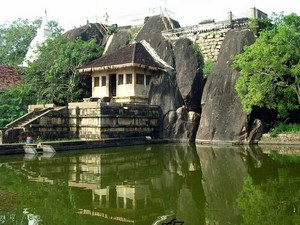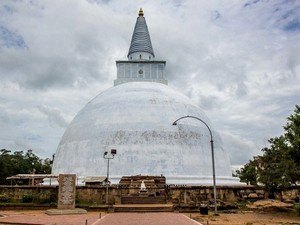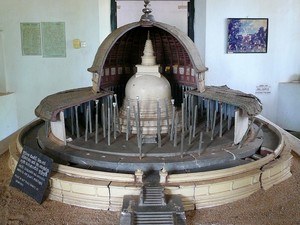Abhayagiri Monastery, Anuradhapura - Timings, History, Architecture, Best Time to Visit
 #3 of 15 Places to Visit in Anuradhapura
#3 of 15 Places to Visit in Anuradhapura
 Distance (From Anuradhapura): 5 Kms
Distance (From Anuradhapura): 5 Kms
 Trip Duration (Including Travel): 1 Hour
Trip Duration (Including Travel): 1 Hour
 Place Location: At The North End Of Anuradhapura
Place Location: At The North End Of Anuradhapura
 Transportation Options: Cab / Auto
Transportation Options: Cab / Auto
 Travel Tips: The entry ticket includes entry to all the historical sites except Maha Bodhi & Isurumuniya
Travel Tips: The entry ticket includes entry to all the historical sites except Maha Bodhi & Isurumuniya
At a distance of 5 km from Anuradhapura Railway Station, Abhayagiri Vihara is an ancient monastery situated in Anuradhapura, Sri Lanka. It is one of the most extensive ruins in the world and among the most sacred Buddhist pilgrimage places in Sri Lanka.
Located at the north end of Anuradhapura, the Abhayagiri Vihara monastic complex was established in the 2nd century BC by King Valagamba in the celebration of his victory against the Indian Chola invaders. The monastery was donated to a Buddhist monk Thera Mahatissa as a token of gratitude for the moral and material support extended to the king, at a time of adversity, in exile building an army to regain his kingdom. It was once housed as many as 5,000 monks from around the world and was a thriving center of Buddhist philosophies for nearly 600 years. The monastery flourished under the patronage of King Mahasena (AD 276-303).
Encompasses over 500 acres, this monastery is encircled by great walls and containing elaborate stupas, bathing ponds, carved balustrades, and moonstones. The center of attraction of the monastery was Abhayagiri Stupa which was also built by King Valagamba (89-77 BC) and renovated by King Parakramabahu in the 12th century. Standing at 370 feet in height, Abhayagiri Dagoba was the second tallest dagoba in Sri Lanka when it was first built. Saddarma Ratgnawaliya scripture has it that a statue of bull containing the relics of Buddha was buried in this dagoba. It is also believed that the Stupa is built over the footprints of Lord Buddha. The dagoba has four entrances on four sides and these are decorated with the fine sculptures of animals.
The area around the stupa contains the ruins of many ancient buildings and structures like Moonstone, Ratna Prasada, Elephant Pond, Museum, Lankarama Complex, Samadhi Buddha Statue, and Twin Ponds. The twin ponds near the entrance were believed to have been constructed during the reign of King Aggabodhi I in the 6th century for the use of resident monks at Abhayagiri Monastery. Both ponds have the same breadth, i.e. 51 feet and are characterized by the subversive conduits used to clean, fill and then empty the water pools. Near the pond lies the 2m tall Buddha statue, popularly known as the Samadhi statue belongs to the 4th century. It was one of the four Buddha statues placed around a Bodhi tree facing the cardinal directions. The statue is sculptured out of dolomite marble seated in virasana and displaying the pose known as dhyana mudra.
Located to the back of Abhayagiri Stupa is the Ratna Prasada, the largest building in the complex. Also called Uposathagara of the resident monk, it was first built by King Kanitthatissa in the 2nd Century and was later enlarged by King Mahinda II. The Dravidian invasion in the 9th century put the building to fire and sword. The present preserved ruins, monolithic pillars on a stone platform, date to 7-8 centuries while the recent excavation unearthed the ruins of the 2nd-century foundation of the Ratna Prasada. The exquisitely carved guard stone is the main highlight here which portrays a god-king protected by a five-headed cobra (Naga Gala) holding a vase with flowers reflecting prosperity.
Moonstone that serves as a doormat at ancient buildings of Sri Lanka is a work of art. At Abhayagiri Monastery two exquisitely carved moonstones were discovered - one is at Mahasen's palace also known as Pancavasa building while the other is at Queen's Palace, just a short distance away from Ratna Prasada. The Moonstone has an exciting design of a ring of flames in the outer edge, with four different animals along the circumference.
Eth-Pokuna or Elephant Pond, located south-west of the Abhayagiri stupa was built during the 3rd century AC. It is believed to be the largest man-made pond built in the ancient era of Sri Lanka. Near to the pond lies the Lankarama Stupa built by King Valagamba on the lines of Thuparama Stupa. In its days of glory, Lankarama had 88 stone columns, in three concentric circles, surrounding the dagoba that held up a circular roof. Today only a few of the carved stone pillars can be seen around the renovated dagoba.
There is also a museum at the Abhayagiri Monastery which was established in the memory of the famous Chinese traveler Fa Hein. It houses the various treasures discovered during the excavations at Abhayagiri Monastery. Some of the items include gold and gem-studded ornaments and jewellery, coins belonging to the pre-Christian era, metal objects, molds and crucibles used in their manufacture, ceramics, pottery, glass, tiles, sculptures, etc.
Timings: 7 AM - 5.30 PM
Entry: USD. 25 for Foreigners & USD. 12 for SAARC Nationals (Including entry to all the historical sites except Maha Bodhi & Isurumuniya)



